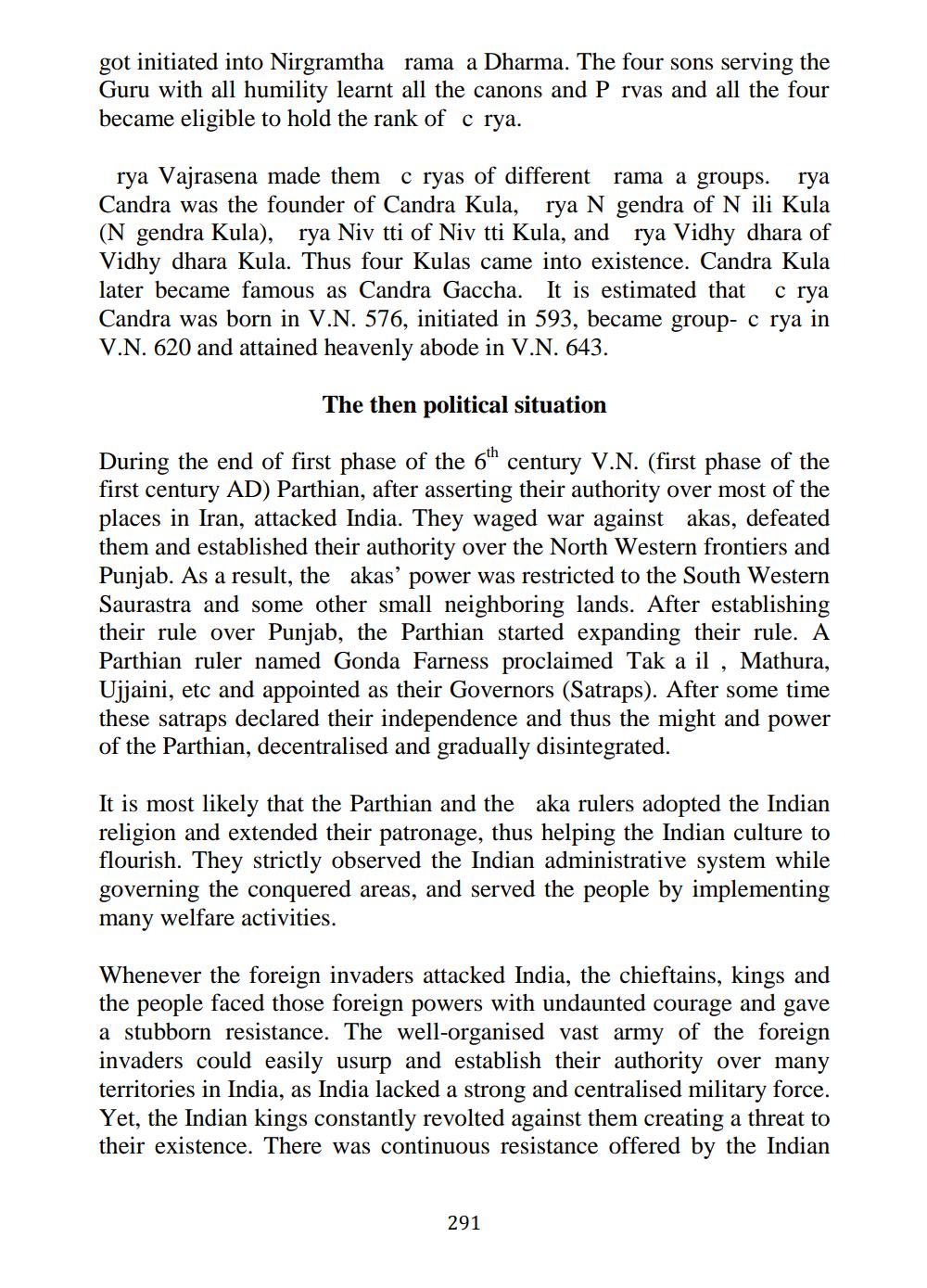________________
got initiated into Nirgramtha rama a Dharma. The four sons serving the Guru with all humility learnt all the canons and P rvas and all the four became eligible to hold the rank of c rya.
rya Vajrasena made them c ryas of different rama a groups. rya Candra was the founder of Candra Kula, rya N gendra of N ili Kula (N gendra Kula), rya Niv tti of Niv tti Kula, and rya Vidhy dhara of Vidhy dhara Kula. Thus four Kulas came into existence. Candra Kula later became famous as Candra Gaccha. It is estimated that c rya Candra was born in V.N. 576, initiated in 593, became group- c rya in V.N. 620 and attained heavenly abode in V.N. 643.
The then political situation
During the end of first phase of the 6th century V.N. (first phase of the first century AD) Parthian, after asserting their authority over most of the places in Iran, attacked India. They waged war against akas, defeated them and established their authority over the North Western frontiers and Punjab. As a result, the akas' power was restricted to the South Western Saurastra and some other small neighboring lands. After establishing their rule over Punjab, the Parthian started expanding their rule. A Parthian ruler named Gonda Farness proclaimed Tak a il , Mathura, Ujjaini, etc and appointed as their Governors (Satraps). After some time
satraps declared their independence and thus the might and power of the Parthian, decentralised and gradually disintegrated.
It is most likely that the Parthian and the aka rulers adopted the Indian religion and extended their patronage, thus helping the Indian culture to flourish. They strictly observed the Indian administrative system while governing the conquered areas, and served the people by implementing many welfare activities.
Whenever the foreign invaders attacked India, the chieftains, kings and the people faced those foreign powers with undaunted courage and gave a stubborn resistance. The well-organised vast army of the foreign invaders could easily usurp and establish their authority over many territories in India, as India lacked a strong and centralised military force. Yet, the Indian kings constantly revolted against them creating a threat to their existence. There was continuous resistance offered by the Indian
291




